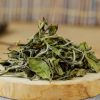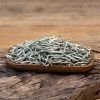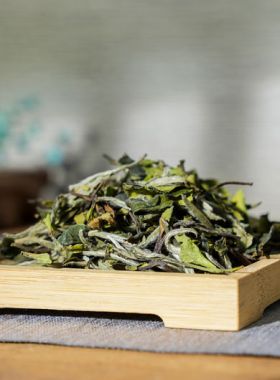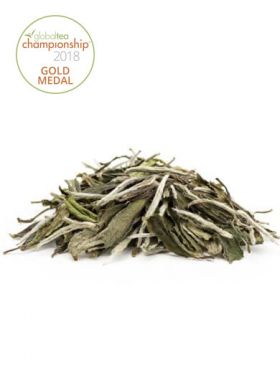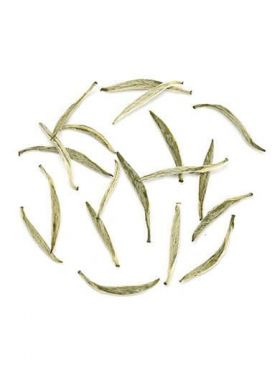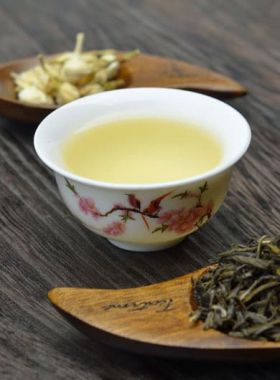-
Fast ShippingFree shipping for orders above $40
to most countries. -
Secure PaymentPay with Paypal, Credit Card …
-
Carefully SelectedFrequently Visit Tea Gardens.
Taste Repetitiously -
15 Days RefundNo Questions Asked
Refund Policy
Jasmine Silver Needle White Tea (Mo Li Yin Zhen)
Elegant delicate, nice and mild jasmine taste
Elegant delicate, nice and mild jasmine taste
| Origin: |
Tea from Fujian Province, China; Jasmine from Hengxian, Guangxi Province, China |
|---|---|
| Season: |
Spring Tea |
|
Harvest Date: |
May 18, 2024 |
| Dry Leaf: |
Straight, evenly-shaped fat buds, covered with abundant white “hairs” |
| Aroma: |
Strong jasmine fragrance |
| Liquor: |
Light yellow, bright and clear |
| Taste: |
A blend of strong sweet jasmine and refreshing white tea |
| Tea Bush: |
Yunnan large-leaf tea tree |
| Caffeine: |
Low caffeine (less than 10% of a cup of coffee) |
| Storage: |
Store in cool, dry place away from sunlight; keep ventilated |
| Shelf Life: |
36 months |
Angel's Comment:
The Jasmine Silver Needle White Tea is scented several times with fresh jasmine flowers. Highly recommend to tea lovers fond of white tea’s delicate freshness and the sweet fragrance of jasmine, which are both prominent in this tea.
Certification:
 |
| Eurofins Certification (No. AR-22-SU-154739-01-EN) |
The jasmine used to scent this Silver Needle tea is produced in Hengxian, Guangxi Province, China, which is the most famous jasmine-producing area. This Jasmine Silver Needle White Tea is a refreshing tea which will appeal to fans of jasmine’s fragrance.
 |
Cup Method |
 |
Chinese Gongfu Method |
 |
Teacup: 8.5oz / 250ml |  |
Gaiwan: 3.8oz / 110ml |
 |
185℉ / 85℃ |  |
185℉ / 85℃ |
 |
2 Teaspoons / 2g Tea |  |
5g Tea |
 |
Brewing time: 3 - 5 mins |  |
6 steeps: rinse, 30s, 40s, 60s, 80s, 100s, 120s |
Scenting makes use of the ability of tea leaves to absorb and release aromas. The tea leaves absorb the fragrant smell of the jasmine, creating a layered flavor blending the tastes of white tea and jasmine.
The process of scenting has several steps: Combining tea and jasmine flowers, Piling, Baking, Cooling, and Binning.
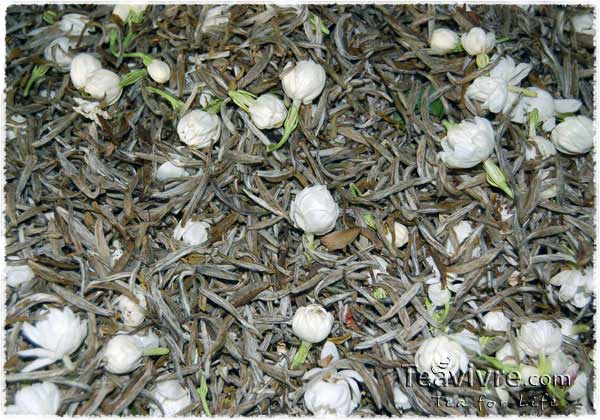
Piling is the most important step in scenting. Temperature control is very important. If it is too cold, the tea leaves cannot completely absorb the fragrance of the jasmine; if it is too hot, the tea leaves will be burned.
This scenting process is repeated with fresh jasmine flowers a total of 5 to 6 times. Each time requires adding around 1 kg of fresh flowers. Each scenting process takes 6 to 7 hours. This highly-involved process requires around 3.5 kg of fresh Silver Needle tea leaves and 6 kg of jasmine flowers to produce 1kg of Jasmine Silver Needle White Tea.
Produced in Guangxi Province, China, the jasmine used to scent this Silver Needle tea has earned nationwide recognition. The most outstanding production area is Hengxian, Guangxi Province, which is known as “the city of Chinese jasmine”, since it has a large planting area and can produce high-yield, high-quality jasmine. Located in the southeast of Guangxi Province, Hengxian is between 108°48’ and 109°37’ east longitude and between 22°08’and 23°30’ north latitude, with a total area of 3464 km2.
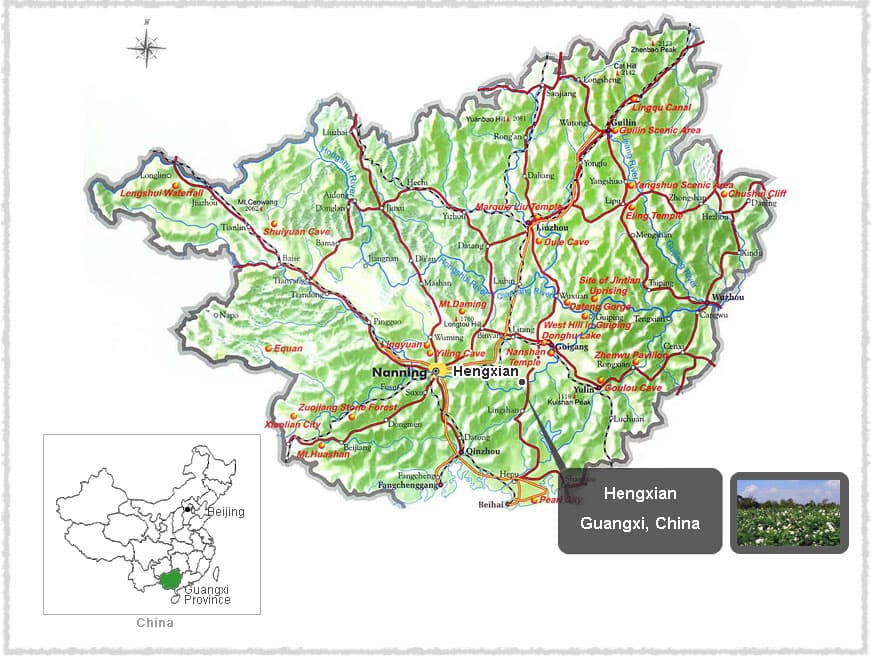
This tea is made from the Yunnan large-leaf. It propagates sexually and takes the form of an arbour tree, meaning that it can grow to over six meters tall. 1984, the Fengqing large-leaf species was certified by the Chinese government as a national grade. It contains an abundance of tea polyphenols (30.2%) and catechins (13.4%), as well as 2.9% amino acids and 3.2% caffeine.

White tea was originally grown in the area around the city of Fuding, in Fujian Province. It later spread to the areas around the cities of Shuiji, then Zhenghe. The first type of white tea produced was Silver Needle tea, in the area around Taimu Mountain near Fuding.
Originally, Silver Needle tea was made from the buds of the Xiaobai variety of tea bush. This variety is smaller and slower growing, and so Silver Needle tea was expensive and rare. However, around 1857, farmers around the town of Shuiji began using the Dabaihao tea bush varieties. They have larger buds and - more importantly - produce better quality tea, with more white “hairs” on the buds and a stronger fragrance and taste. From that time on, white tea has been made using the Dabaihao tea plants.
-
5 stars85
-
4 stars16
-
3 stars6
-
2 stars0
-
1 star0



